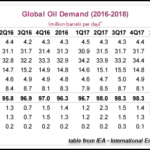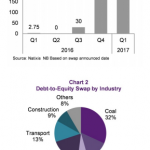For the full-year 2017, the Dividend Growth portfolio returned 8.5%, trailing the S&P 500’s 19.4% by a wide margin [returns figures calculated by Interactive Brokers].
While I probably shouldn’t consider an 8.5% annual return a “failure,” it’s certainly frustrating to me to trail my benchmark like this. So, we’re going to take a long, hard look at what went right and what went wrong in 2017.
To start, it’s important to remember that, by design, my returns will deviate from the indexes. In my view, an active manager whose return closely mirrors that of the S&P 500 (or any benchmark) is a closet indexer that isn’t offering much in the way of value. If a manager is too timid to deviate from the S&P 500, then frankly, the client would be better served by firing the manager and opting for a cheaper index fund.
An actively manager should be truly active. This means that, if they are doing their jobs, there will be years where they beat the pants off of the S&P 500, but there will also be years when they don’t. Over time, an active managers’ returns should be as good or better than their benchmark index’s returns. But just as importantly, their returns shouldnot be highly correlated. And here, I can confidently say that my returns are not highly correlated to those to the S&P 500. The Dividend Growth portfolio consistently produces an R-Squared of 0.5 to 0.6.
In plain English, this means that only about half of the portfolio’s returns are explained by the S&P 500. The rest is explained by stock picking. That is exceptionally high diversification for a long-only stock portfolio.
In 2016, the Dividend Growth portfolio beat the S&P 500 by a wide margin, 26.0% vs. 9.5%. Last year, it underperformed, 8.5% vs. 19.4%. That is the nature of a truly actively-managed portfolio. There will be years of outperformance, and there will be years of underperformance.














Leave A Comment